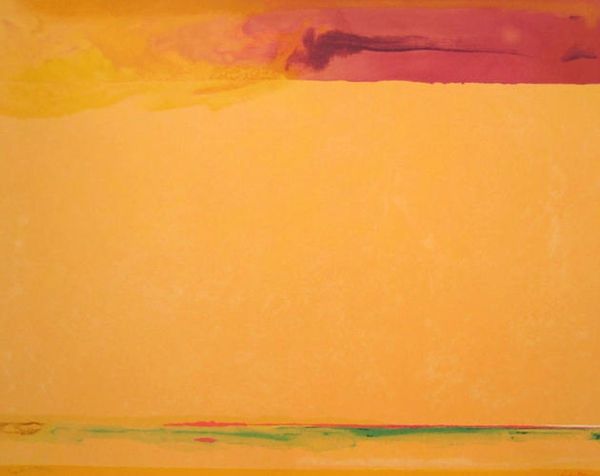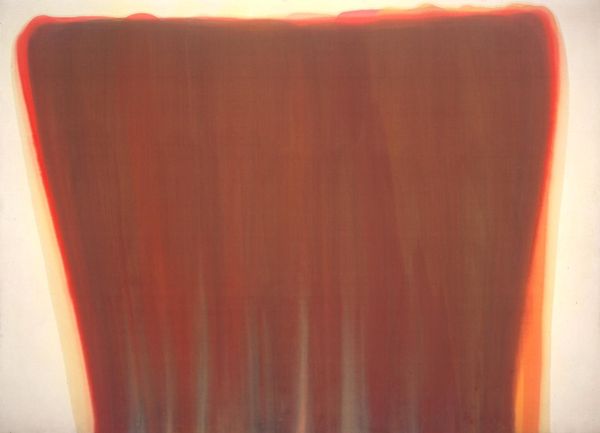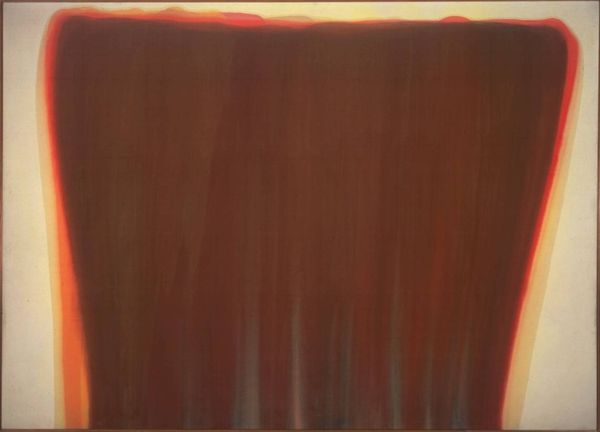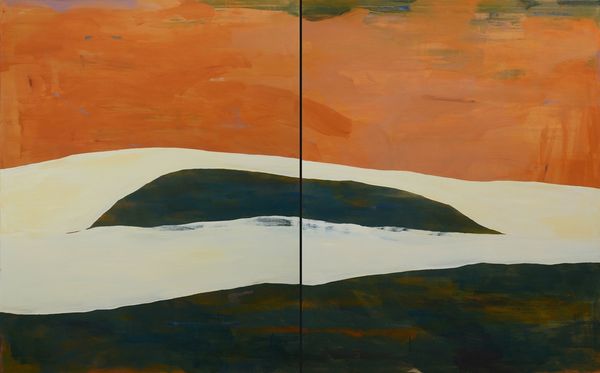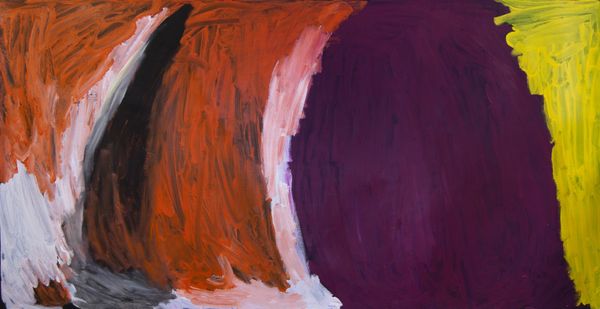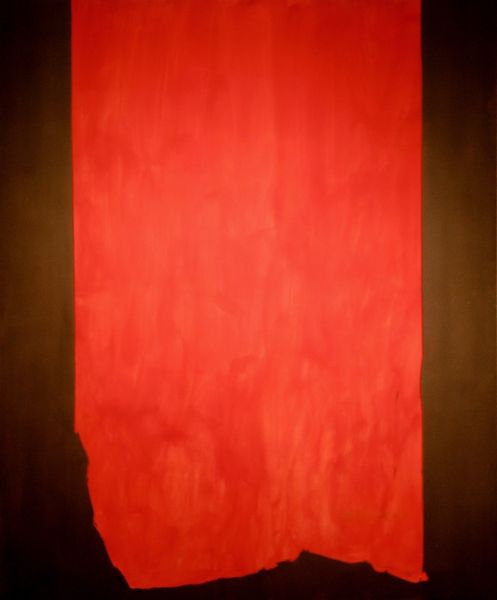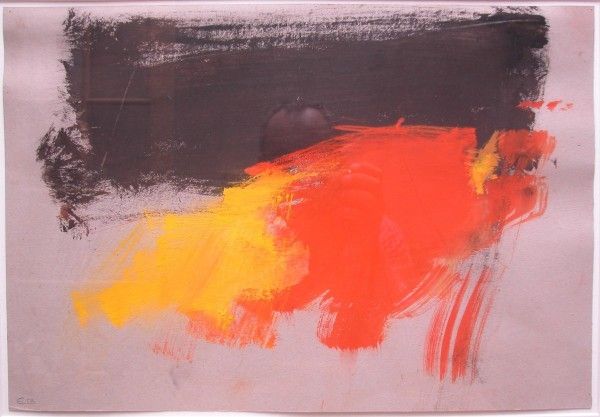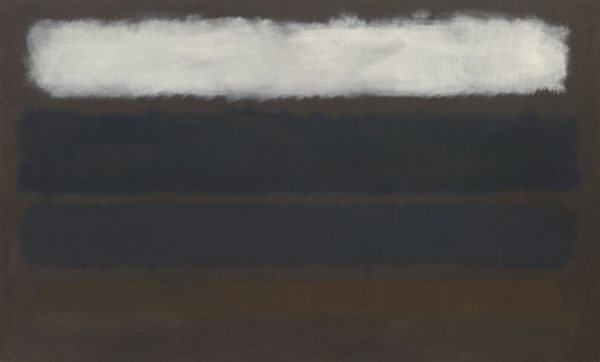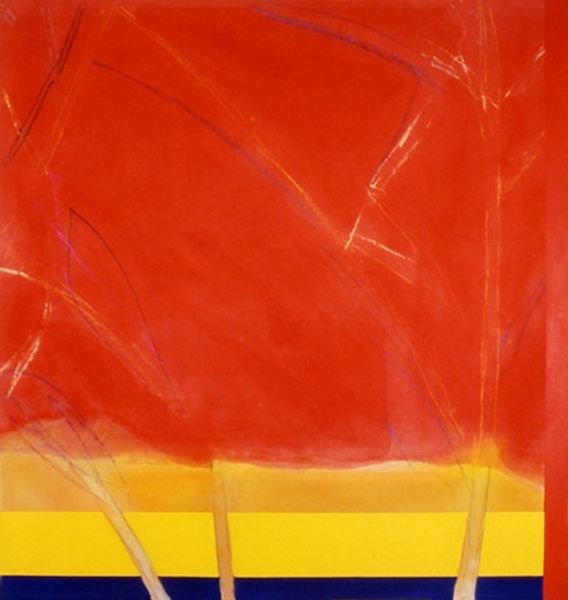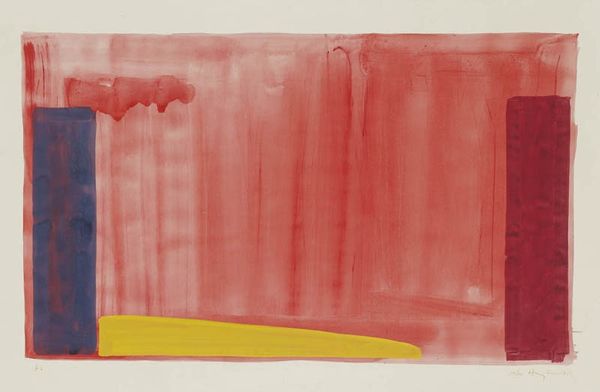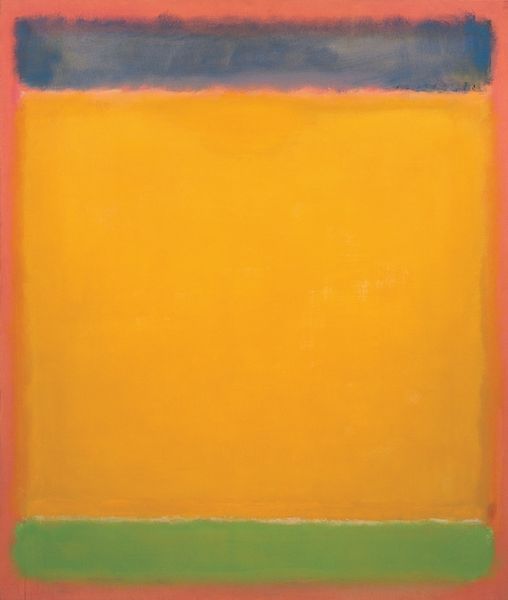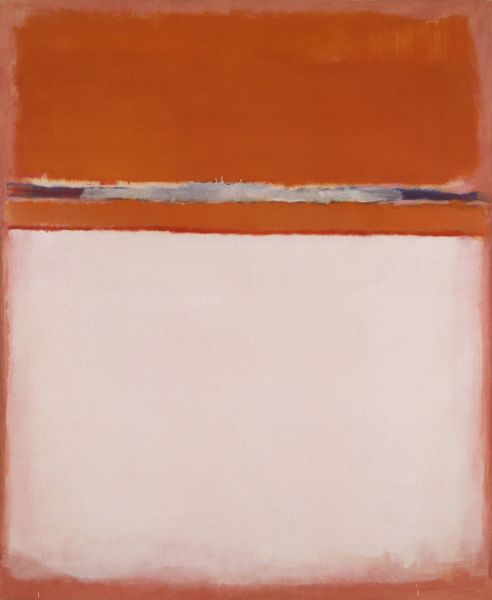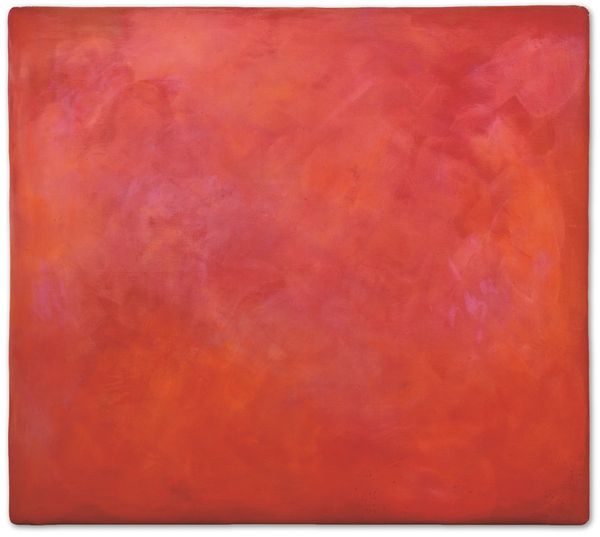
painting, acrylic-paint
#
abstract-expressionism
#
abstract expressionism
#
painting
#
colour-field-painting
#
acrylic-paint
#
acrylic on canvas
#
abstraction
#
abstract composition
#
abstract art
#
modernism
#
watercolor
#
orange
Copyright: Edward Corbett,Fair Use
Curator: Edward Corbett's "Washington D.C. December 1964 (#10) I", completed in 1964 using acrylic paint, presents an intriguing study in color field painting and the minimalist interpretation of landscape. Editor: Whoa. That’s…intense. Like a sunset over a simmering volcano. Is it supposed to evoke, like, winter doldrums, or political heat? Curator: Well, given the tumultuous political climate of the '60s, it is difficult not to contextualize Corbett’s work. As a prominent figure in color field painting, Corbett used vast expanses of color to communicate moods and provoke contemplative states. His art really embodies a kind of quiet protest, a withdrawal from explicit imagery into subjective experience, reflective of the social and political issues in America. Editor: Subjective experience, okay, yeah. It feels so…blocked. Like emotional layers. Like the artist is going through a real bad experience with politics, then trying to deal with feelings and express, finally just gives up. I wonder, was this period in history particularly challenging for abstract artists trying to stay politically neutral or even find relevance in their work? Curator: It's definitely a complex period for artists. Corbett, who served as a naval aviator during World War II, underwent treatment in a psychiatric hospital for an extended period. In post-war society, American abstract expressionism was often co-opted by the government for promoting the values of American cultural and individual freedom. Artists like Corbett navigated this tricky terrain of artistic expression, psychological experience, and social expectation. Editor: Hmm. All those reds, oranges and umbers pressing against each other—makes you feel restless. As a piece of art, it reflects a sense of the turbulent decade. It has an intense mood, like the moment before some big news drops. Curator: The choice of warm hues contrasts the cold realities and feelings of distress surrounding Washington in December, 1964, which certainly makes it compelling for viewers like yourself. Editor: And you made me view a silent abstract in a different context! Thank you for letting me observe with my wild eyes while sharing the sociopolitical scene. Curator: My pleasure, offering historical perspectives, it can deeply influence how one sees the art itself.
Comments
No comments
Be the first to comment and join the conversation on the ultimate creative platform.
